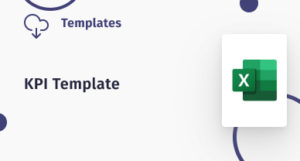Business succession planning is a valuable tool for both small businesses and growing enterprises. In small businesses, succession planning means effectively managing changes in ownership or leadership. In larger organizations, it that can help to avoid potential talent gaps that have a detrimental effect on the company. The right strategy can help you plan ahead so that you can transfer knowledge and retain employees in key roles. And this is a top priority in these uncertain, post-pandemic times.
With that in mind, we have created a step-by-step guide to help you design and implement a plan that sets your business up for long-term success. We will take a look at the benefits of succession planning in HR and break down the succession planning process to help you understand everything that’s involved.
- What Is a Succession Plan?
- Why is Business Succession Planning Important?
- What is Succession Planning in HR?
- The Business Succession Planning Process in 5 Steps
- Business Succession Planning Best Practices
- Succession Planning Template
- Succession Planning Tools
- Create a succession plan with performance management software 🚀
What Is a Succession Plan?
So, what is the definition of succession planning? How can you apply it to your business?
Business succession planning is a process that helps you prepare your company for the future. Essentially, it’s about creating a strategy and process for identifying potential future leaders and developing their skills so that they are ready to take on a new role when one of your key employees leaves the company.
Through careful planning, communication, training, and feedback, you can create a successful change management strategy that prepares you for potential transitions in your business. This helps you avoid key player talent gaps. It also helps you proactively develop your inclusive leaders of the future.
A SHRM survey conducted last year revealed that 46% of small businesses do not have any succession plan in place. To stay ahead in today’s evolving workplace, it’s time to develop a formal succession management strategy.
Do you have a comprehensive succession plan? If not, you’re in the right spot.
Why is Business Succession Planning Important?
According to the 2021 Global Leadership Forecast, companies around the world are facing a leadership crisis. In fact, only 11% of surveyed organizations reported that they have a “strong” or “very strong” leadership bench, the lowest rating in the past 10 years (it has been in decline since 2011’s reported 18%). This drop has been attributed to a decline in leadership development and transition training in organizations.
Understandable given the distractions the world has had over the past couple of years.
Nonetheless, this figure shows just how important it is for organizations to work on their succession management strategies. This is the most effective way to ensure that the leaders of the future have the right skills and experience to guide them to success. And this is what business succession planning is all about.
By preparing strong leaders for the future, you can help your organization reach its long-term goals, reduce employee turnover, and build a stronger and more resilient business that’s ready to thrive.
Benefits of Business Succession Planning
In case you’re still not convinced, let’s take a look at some of the specific benefits of business succession planning in a bit more detail.
- Identifying and developing your existing employees for future leadership roles helps you to promote from within. Aside from reducing turnover and hiring expenses, this also helps you ensure your future leaders have the right organizational knowledge and internal relationships, something which external recruits will lack.
- Promoting the development of your existing employees shows them that you are willing to invest in their future. This can be a great morale boost that motivates employees to stay at your company. This helps you stay competitive and attract top talent to your business.
- A well-designed succession plan helps you formalize training for both present and future leaders. It keeps your business moving forward and helps you retain your top performers.
- Business succession planning is also an effective tool for mitigating the risks of organizational change. This helps you avoid any potential talent gaps when someone leaves your company. It also helps you pass on valuable institutional knowledge to future leaders before it’s too late.
What is Succession Planning in HR?
Succession planning in HR consists is a vital part of talent management. It’s all about your role as an HR professional in identifying key roles and positions that may need filling in the future and finding and developing internal candidates who may have the right skills and experience to fill them. The right strategy can help you retain staff, cut recruitment costs and better manage your internal recruitment processes.
HR succession planning is the process of identifying, selecting and developing employees who could potentially become key players with the right development. This helps you prepare for potential organizational changes so that you have skilled and engaged employees waiting to fill key leadership roles when the time comes.
As an HR professional, you play a significant role in preparing and facilitating your organization’s succession management strategy. However, for your succession planning in HR strategy to succeed, it’s equally important to get the support of senior management so that your plan is as effective as possible and aligned with your organizational goals.
Talent Management and Succession Planning: Employee Buy-in
Business succession planning is also about managing your existing talent so that you are able to retain as much institutional knowledge and experience as possible. This means that, aside from working with senior management, you also need to rely on the feedback of your employees.
What do we mean by this?
Essentially, it’s all good and well managing and developing your existing talent, but they need to be on board with your succession plan and have a genuine interest in remaining at your company and developing their skills. Otherwise, the time and money you invest in preparing them for future leadership positions will be wasted.
Make sure the potential succession candidates you select are:
- Interested in learning new skills
- Comfortable with change
- Motivated and engaged
- Able to adapt to uncertainty and new working environments
- Willing to take on more responsibilities
- Up for a challenge
The Business Succession Planning Process in 5 Steps
Now that we’ve discussed what business succession planning is, let’s take a look at what you need to include in your succession planning process.
Make sure your succession planning framework includes the following 5 key stages.
Define & Align Your Goals
The first step is creating a succession leadership plan. This means you need to define your goals and align them with your business. You may need to meet with senior leaders for this phase to ensure your goals are aligned with your overall strategy.
You also need to have a clear idea of who you are as a business before creating your succession leadership plan. Once you understand “who” you are, you will be better equipped to identify your potential new leaders.
Finally, to complete your plan, you need to:
- Define the roles, skills, and experience that each successor will require (your succession profiles). Make sure you gather as much feedback on this as possible from your team to help you get a full picture of what you need to include in your succession plan.
- Create a forecast of your company’s needs. Where do you need to be as a company within the next 5 years? How will your organizational structure change over this time? Think about your turnover trends, compensation strategies, who may be due to retire, and training and development plans for the future.
- Update your job descriptions to reflect the information you’ve gathered. Make sure you are clear about your expectations. This will help you define the right candidate profiles for your succession plan.
Create Your Succession Strategy
Defining your goals is one part of your plan, but you also need to create a comprehensive succession planning strategy to make sure you are on the right track – you need a business strategy game plan!
So, what does this mean, exactly?
Put simply, you need to define a series of actions and strategic moves that help you align your succession goals and objectives with your overall HR strategy.
Consider the following:
- Where do you want to be as a business? What roles, positions, skills and experience will you need to succeed?
- Which senior/leadership roles do you need to create a succession plan for?
- Will you take business succession planning into account during performance appraisals in order to identify potential candidates throughout the year?
- Does your business have any specific vulnerabilities that may affect your succession plan? (For example, a high percentage of employees that are due to retire soon)
- Have you considered adjusting your hiring strategy to account for successor roles?
The key here is to be as proactive as possible with your strategy. Anticipate potential gaps in your workforce before they occur.
Identify Potential Candidates
The next step is to evaluate your current workforce in order to identify key positions that may need filling in the future, and key employees that may be suitable replacements. This is where you will implement the succession profiles and job descriptions that you created in the previous step. The more information you include in your profiles and descriptions, the easier it will be to identify the right match within your existing workforce.
Generally speaking, the best candidates will be supportive, proactive, engaged with learning and development, great problem-solvers, adaptable and able to take on more responsibility.
It’s important to be as objective as possible in this stage. You also need to consider that potential candidates may not currently be in leadership roles. It’s all about finding potential. The most effective way to do this is by using succession planning tools and metrics, rather than relying on personal opinions. More on this shortly.
Establish Professional Development Opportunities
As soon as you have your list of potential candidates and you know what skills they need to work on in order to eventually fill the role you have matched them to, it’s time to create a professional development plan to help them get where they need to be.
Which skills does each candidate need to develop? What learning opportunities would help them get the right experience and expand their current skillset? Are there any knowledge gaps that you need to address?
Create a list of the skills each candidate currently has vs. the skills they need to acquire, then work out the best way to offer them suitable opportunities for learning and development. Create individual development plans, offer formal training, consider creating a mentoring or coaching program to support them, and encourage continuous feedback and communication.
Implement Your Plan
The final stage is implementing your business succession plan. This will usually be a gradual transition with multiple short and long-term layers.
The first layer involves officially announcing your succession plan and notifying potential candidates. You then need to roll out your individual development plans and arrange training. Introduce candidates to their mentors, if you are using them, and encourage them to meet regularly. This will show your employees that you support their professional development, and you can see that they have potential.
Most importantly, make sure you collect regular feedback to see how your individual development plans are progressing, and if potential candidates are on track to reach their succession objectives.
Business Succession Planning Best Practices
Here are a few business succession planning best practices to help you create a plan that sets you up for success:
- Formalize your plan. The sooner you create and formalize a detailed succession management plan, the better. Make sure your succession planning process focuses on all key stages. That means not just identifying the roles and skills you need for your future leaders, but also implementing individual development plans to get your workforce where they need to be.
- Make sure your succession planning in HR plan is dynamic. Succession planning is all about change management. Be prepared to adapt to change by constantly updating your plan.
- Collect regular 360-degree feedback. This will help you keep track of your employees’ interests, skills, performance, strengths, weaknesses, and opportunities.
- Promote open communication. This will help you build trust and set clear expectations.
- Consider your entire workforce. Don’t just focus on your managers. Your leaders of the future might be hiding in lower-level positions. Look for potential, not existing skills.
Succession Planning Template
One of the most valuable tools you can use for this strategy is a succession planning template. The right template will help you define key roles within your company and identify suitable replacements. Make sure you include a template in your HR audit checklist (check out this HR audit checklist template if you don’t already have one!)
Here are a few examples of the information you can collect with a succession plan template:
- Current key employees and potential replacements
- Key skills and experience that each position requires
- Candidate training and/or experience level
- The time it would take to onboard a candidate for an existing position
- An overview of upcoming vacancies (for example, key employees that are due to retire)
Succession Planning Tools
In order to create and manage an effective business succession planning strategy, you need to use the right succession planning tools. These are the tools that will help you identify which candidates could potentially be future leaders at your organization. They also help you identify potential succession gaps and map the right candidates to the right positions.
Ideally, you should be using a range of tools to help you get a full picture. Here are a few examples of succession planning assessment tools that will help you with this:
- Personality assessment tools: to help you get a comprehensive picture of your existing culture (e.g. tools for tracking motivation levels)
- Behavioral assessment tools: to help you identify and analyze employee leadership skills and assess how they behave at work (e.g. situational judgment tests)
- Cognitive assessment tools: to evaluate critical thinking and reasoning skills related to performance (e.g. a cognitive aptitude test)
- 360-degree feedback: to gather valuable input from employees and their peers in order to understand their readiness to take on future roles (included in most performance management software solutions)
Succession Planning Software
Finally, once you have designed and implemented your business succession plan, you need to regularly monitor progress. This will help you determine if your plan is working and if potential candidates are on track to reach their succession goals.
And this is where succession planning software can help.
Succession planning software isn’t as daunting as it sounds. In fact, most HRIS systems can provide you with the data you need. In addition, a more robust business management software will also assist you during your succession planning.
The first thing you need is access to key metrics and KPIs. This includes turnover rates, retention rates, cost-per-hire, time-per-hire, and the rate of planned positions being filled. You also need to evaluate performance metrics to determine if business succession planning candidates that have taken on their new role were ready for it.
Did they achieve the training and experience they needed during the development phase in order to take on their new leadership role? If not, what could you have done better?
By analyzing the right data, you can determine what areas of your business succession planning strategy you need to work on in order to continuously improve the quality of your succession candidates. And by using the right HR software and performance management software you can easily identify talent gaps, make comparisons between employees, and simplify the succession management process.




